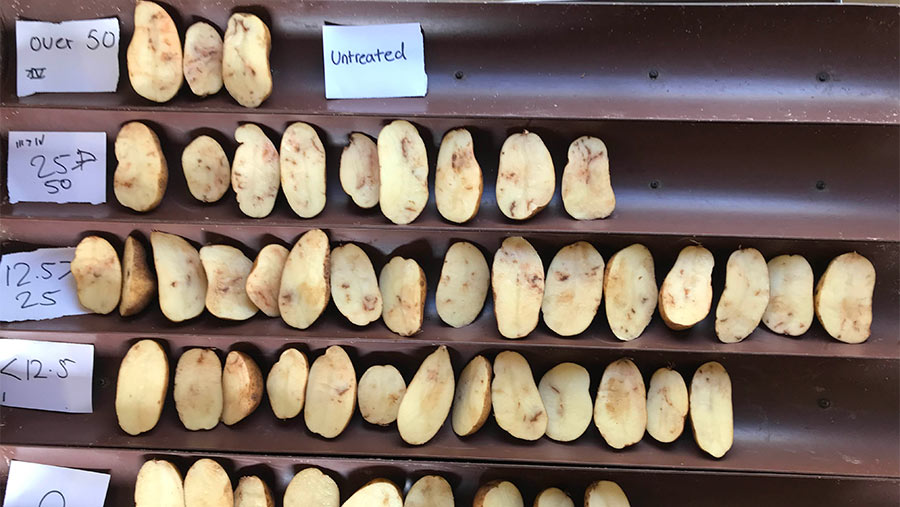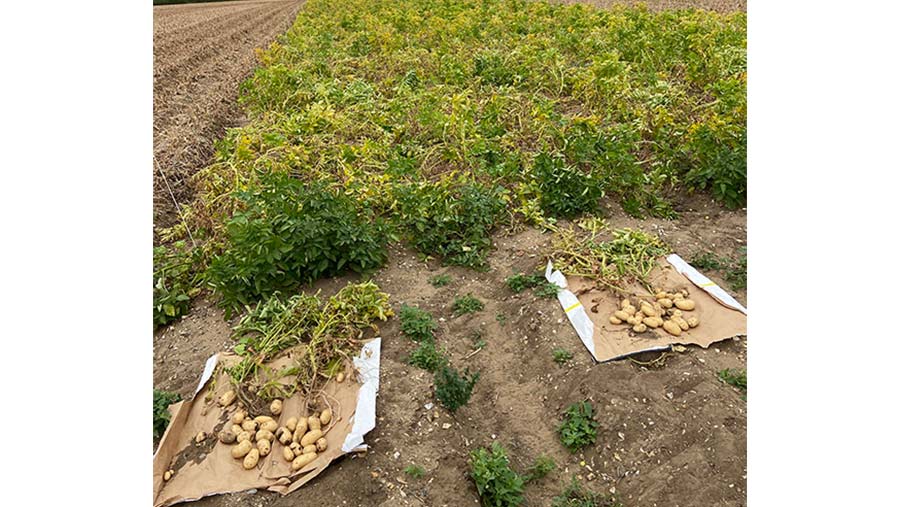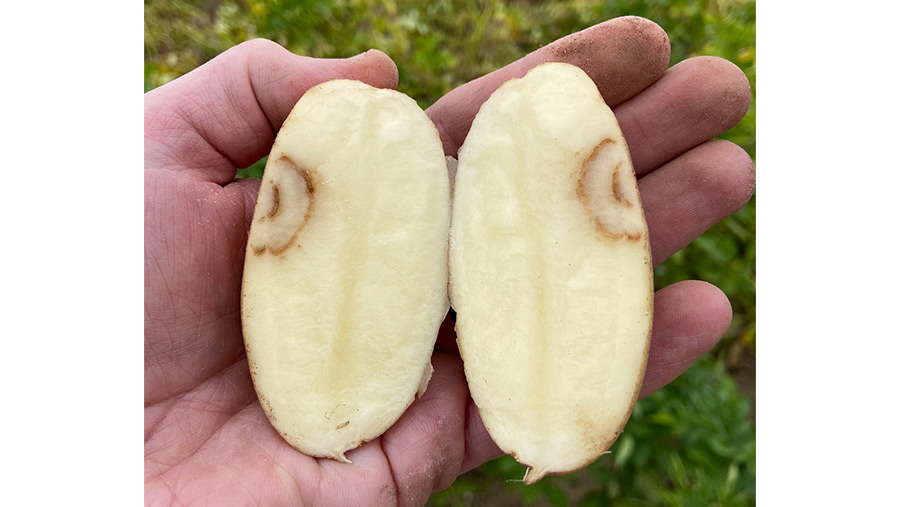Trial shows granular nematicide reduces potato losses from spraing
 © Supplied by Sygenta
© Supplied by Sygenta New research shows how farmers can successfully tackle the growing problem of free-living nematodes, and the subsequent spraing damage to tubers when they transmit tobacco rattle virus.
Tobacco rattle virus leads to brown streaks (known as spraing) inside tubers, as well as surface lesions and malformations.
It can prove costly for growers, as potato crops with spraing symptoms can be rejected for sale.
See also: What a new fungicide-resistant blight strain means for UK farmers

Potato trials © Supplied by Syngenta
Trials undertaken by agronomy and root crop research specialist Produce Solutions have shown a 160% increase in the proportion of tubers that meet processing standards with a key nematicide used at the label rate.
In a field trial looking at a commercial crop of Pentland Dell on a high-risk site in Shropshire, less than 24% of harvested tubers from untreated areas hit the grading acceptability for a processor, compared with more than 60% meeting the specification with the nematicide Nemathorin (fosthiazate).
Tuber assessments ranked 56% of untreated area tubers in the more severely damaged categories, with over 12.5% of surface area affected by spraing symptoms, says Produce Solutions’ team lead, James Lee.
That compared with just 8% of treated tubers exceeding 12.5% of damage, and zero in the highest damage category of 50% surface area affected.
Increasing problem
Syngenta technical manager Andy Cunningham says that the change in climate has led to increased free-living nematode activity in recent seasons.
The nematodes move more easily in a film of soil moisture between soil particles. Lighter sandy soils, favoured for potato cropping, are the most susceptible in a wet early spring season after planting.

Effects of spraing © Supplied by Syngenta
Furthermore, stubby root nematodes can proliferate on some plants in green cover crops.
Therefore, new generations of nematodes can pick up tobacco rattle virus from specific host weed species and have the potential to infect through any rotational break.
Tubers are most susceptible to more damaging effects of spraing from early tobacco rattle virus infection, he says.
“Nemathorin can effectively protect the crop by paralysing nematodes for long enough to reduce initial tobacco rattle virus infection and for crops to develop past the danger period,” he adds.
The Shropshire site was specifically selected for its history of free-living nematodes.
Pre-trial testing revealed a population of 433 stubby root nematodes in each litre of soil, including the nematode species Trichodorus and Paratrichodorus, most widely associated with spraing.
Testing also showed the free-living nematodes to be carrying tobacco rattle virus.

